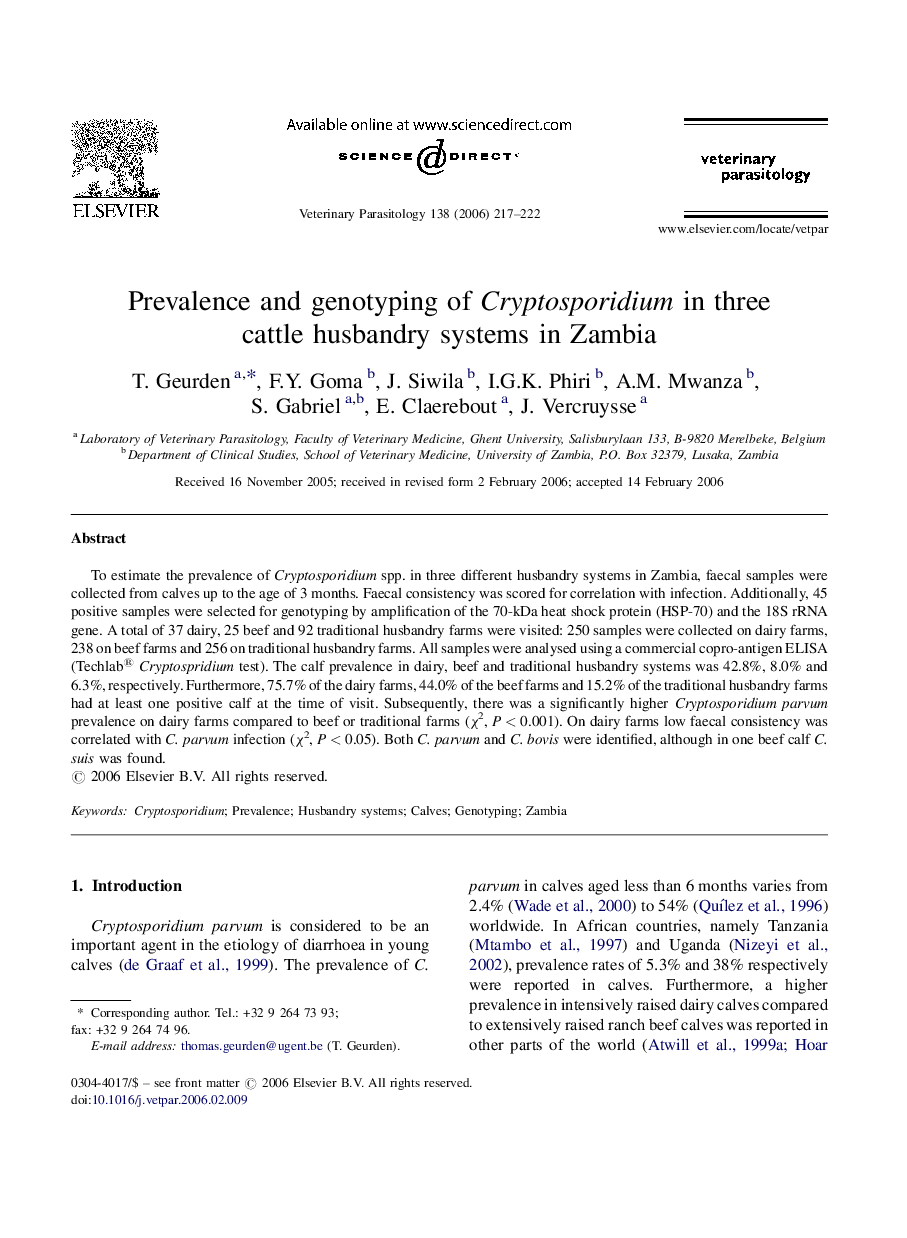| Article ID | Journal | Published Year | Pages | File Type |
|---|---|---|---|---|
| 2472610 | Veterinary Parasitology | 2006 | 6 Pages |
To estimate the prevalence of Cryptosporidium spp. in three different husbandry systems in Zambia, faecal samples were collected from calves up to the age of 3 months. Faecal consistency was scored for correlation with infection. Additionally, 45 positive samples were selected for genotyping by amplification of the 70-kDa heat shock protein (HSP-70) and the 18S rRNA gene. A total of 37 dairy, 25 beef and 92 traditional husbandry farms were visited: 250 samples were collected on dairy farms, 238 on beef farms and 256 on traditional husbandry farms. All samples were analysed using a commercial copro-antigen ELISA (Techlab®Cryptospridium test). The calf prevalence in dairy, beef and traditional husbandry systems was 42.8%, 8.0% and 6.3%, respectively. Furthermore, 75.7% of the dairy farms, 44.0% of the beef farms and 15.2% of the traditional husbandry farms had at least one positive calf at the time of visit. Subsequently, there was a significantly higher Cryptosporidium parvum prevalence on dairy farms compared to beef or traditional farms (χ2, P < 0.001). On dairy farms low faecal consistency was correlated with C. parvum infection (χ2, P < 0.05). Both C. parvum and C. bovis were identified, although in one beef calf C. suis was found.
